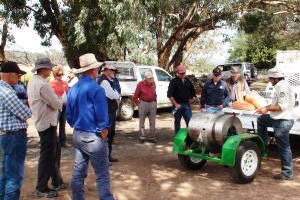 Biosecurity is one of the key business and environmental risks that ACT rural landholders manage for every day. This objective aims to support rural landholders to manage for existing biosecurity risks and prepare for emerging biosecurity risks.
Biosecurity is one of the key business and environmental risks that ACT rural landholders manage for every day. This objective aims to support rural landholders to manage for existing biosecurity risks and prepare for emerging biosecurity risks.
Desired outcomes
Reduced impact of weeds and pest animals on farm productivity and the natural environment, and to improve preparedness for new and emerging biosecurity risks (weeds, pest animals and disease).
Priority areas
- Southern ACT – African Lovegrass
- Majura, Callum Brae/Jerrabomberra and Pialligo – rabbits
- Southern ACT river corridors: Naas, Gudgenby, Paddys River, Murrumbidgee – pigs, deer
- ACT-wide – emerging biosecurity risks
Future investment focus
Capacity building and facilitation to support collaborative biosecurity planning, increased knowledge and preparedness for new and emerging biosecurity risks, improved knowledge understanding of best management practice for control of existing threats, and engagement of a variety of land managers including utilities, equestrian and agricultural enterprises. Incentives, trials and demonstrations to support landholders to implement best practice control of existing biosecurity threats (weeds and pest animal).
Building on existing investment
ACT Natural Resource Management (ACT NRM) has undertaken pioneer work on African Love Grass in partnership with the ACT Parks and Conservation Service, ACT rural landholders and the Southern ACT Catchment Group (SACTCG).
Other programs include the Gudgenby Woody Weed Works Project and Catchment Wide Weed Control in Paddy's River. The SACTCG weed spray trailer and Spray Safe and Save courses have been a long term investment over 5 years delivering on-ground and capacity building outcomes
There has also been a focus on rabbits in and adjacent to Canberra Nature Park under the Australian Government's Established Pest Animal and Weed funding. This was also in partnership with ACT Parks and Conservation and rural landholders.
